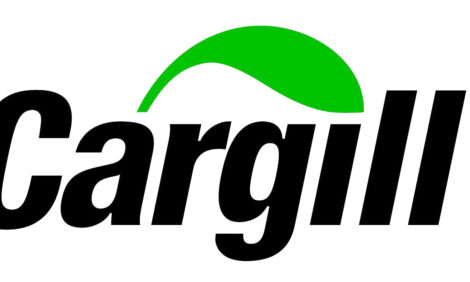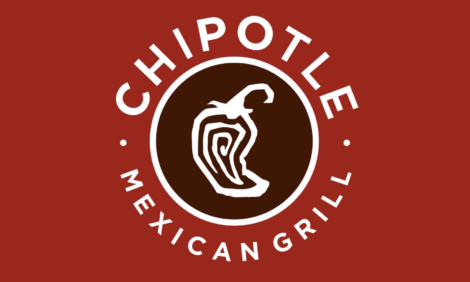



April Pig Crop Down 4 Percent - UPDATED
US - May 2003 Hogs and Pigs report from the USDA National Agricultural Statistics Service, updated with Ron Plain's commentary.USDA May Hogs and Pigs Report
The April 2003 U.S. pig crop at 8.38 million head, was 4 percent below the previous year. Sows
farrowing during this period totaled 944 thousand head, 4 percent below last year. The average pigs per
litter for April increased to 8.88, compared to 8.85 last year.
The U.S. inventory of sows and gilts on May 1, 2003, was 5.80 million head, down 3 percent from May 1, 2002.
U.S. sows and gilts bred during April totaled 1.15 million head, down 2 percent from the previous year.

Report Tables


Monthly farrowing and pig crop estimates are preliminary and may be revised in the Quarterly Hogs and Pigs Reports. Various factors can require revisions, such as sample variability, difference in reporting time-frame (monthly vs. quarterly), and pre-weaning and post-weaning death loss. Please refer to the Revision Policy on Page 3 of this report for more information.
Reliability of May 2003 Hogs and Pigs Estimates
Survey Procedures: A random sample of 2,700 U.S. producers from contractors to independent producers were used to provide data for these estimates. Survey procedures ensured that all breeding and farrowing operations, regardless of size, had a chance to be included in the survey. Large producers were sampled more heavily than small operations. Data were collected during the first-half of the month by mail, telephone, and face-to-face personal interviews. Operations were asked to provide information on sow and gilt inventories as of the first of the month, sows and gilts bred during the previous month, sows and gilts farrowed during the previous month, and the pig crop from these litters.Revision Policy: Revisions to previous monthly estimates are made during the quarterly report. These revisions are to improve month to month, and quarter to quarter relationships. In December, estimates for all months and quarters of the current and previous year are reviewed. The reviews are primarily based on hog check-off receipts and slaughter. Estimates will also be reviewed after data from the Department of Agriculture five-year Census of Agriculture are available. No revisions will be made after that date.
Reliability: Since all operations with sow and gilt inventory are not included in the sample, survey estimates are subject to sampling variability. Survey results are also subject to non-sampling errors such as omissions, duplication, and mistakes in reporting, recording, and processing the data. The affects of these errors cannot be measured directly. They are minimized through rigid quality controls in the data collection process and through a careful review of all reported data for consistency and reasonableness.
Commentary on the report - Ron Plain
 Ron Plain |
USDA's May hogs and pigs report had some good news and some not-so-good news.
The good news was that litters farrowed during April were down 4.0%. This is slightly smaller than the spring farrrowing intentions in the March quarterly report (down 3.4%). Pigs per litter during April (8.88) were up 0.3% from a year ago. USDA estimates the April 2003 pig crop was 3.7% smaller than April 2002.
The not-so-good news was that USDA said the inventory of sows and gilts held for breeding was 3.1% smaller than last May 1 and that producers bred 2.0% fewer sows and gilts during April 2003 than a year earlier. Although being down is obviously the desired direction to bring about reduced hog slaughter and higher prices, the percentage drop was not as much as hoped. The sow and gilt inventory was down 3.5%, 4.0% and 3.1%, respectively, on February 1, March 1 and April 1. The number of sows and gilts bred has been below year-earlier levels for the last eleven months, but the April drop was the smallest since August 2002. Given all the red ink that producers accumulated in 2002, we need to see the breeding herd and matings stay below year-earlier levels for quite a while longer. The smaller-than-expected reductions in the breeding herd and females bred may indicate a not-too-distant end to the herd reduction.
The November pig crop (96.3%) implied that May 2003 slaughter would be 3% smaller than April 2002. Preliminary data indicate daily hog slaughter was down 1.9% in April. Part of the increase (0.4% by my estimation) was due to increased imports of feeder pigs from Canada and increased sow and gilt slaughter. Without the extra females and Canadian pigs, slaughter would have been down 2.3%.
The December and January pig crops (both 99.4% of a year ago) imply that June and July hog slaughter will be close to that of 12 months earlier. (Assuming continuing increases in female slaughter and imports of hogs and pigs from Canada.) Terminal market barrows and gilts averaged $35.74/cwt last June 2002 and $37.84/cwt in July 2002. We are expecting June-July 2003 hog slaughter to be down 2-3% and live prices to average in the low to mid $40s this summer.
The February-April pig crop (96.4%) suggests August-October hog slaughter will be down 3% or so compared to the same three months in 2002. This should mean live hog prices in the high $30s and low $40s. We believe producers accelerated marketings last summer making the third quarter 2002 hog slaughter unusually large and prices surprisingly low. We averaged only $28.10/cwt for terminal market hogs in August-October 2002. There is a good chance third quarter slaughter this year will be down more than 3% and was live hog prices in the late summer of 2003 will average not too much below $40.
SowsFarrowed Pigs/ --Pig Crop-- Females Bred 000s %YrAgo Litter 000s %YrAgo 000s %YrAgo ------------ ------ ------------ ------------ Apr03 944 96.0 8.88 8382 96.3 1150 98.0 Mar03 940 96.1 8.85 8319 96.6 1145 97.0 Feb03 928 96.0 8.86 8220 96.2 1125 97.3 Jan03 931 98.4 8.82 8211 99.4 1150 96.6 Dec02 908 98.4 8.75 7943 99.4 1165 97.6 Nov02 926 96.5 8.83 8176 96.3 1170 97.5 Oct02 940 97.6 8.83 8300 97.4 1160 96.9 Sep02 951 98.4 8.85 8416 99.2 1145 97.8 Aug02 959 100.5 8.92 8554 100.7 1120 98.9 Jul02 968 100.7 8.89 8609 101.0 1145 99.1 Jun02 960 99.4 8.89 8537 100.1 1168 97.6 May02 982 102.5 8.81 8651 101.5 1170 100.4 Apr02 983 103.1 8.85 8700 102.6 1173 100.3 Mar02 978 102.0 8.80 8608 101.2 1181 100.5 Feb02 967 102.8 8.83 8543 103.3 1156 101.2 Jan02 946 104.4 8.73 8257 104.7 1190 101.8 Dec01 923 102.4 8.66 7994 102.4 1194 100.8 Nov01 960 103.4 8.84 8488 103.3 1200 102.7 Oct01 963 102.4 8.85 8523 102.5 1197 102.0 Sep01 966 99.6 8.78 8481 98.9 1171 101.0 Aug01 954 99.5 8.90 8491 100.0 1133 NA Jul01 961 99.1 8.87 8522 99.3 1155 NA Jun01 963 100.3 8.85 8526 100.6 1197 NA May01 958 100.3 8.90 8525 100.7 1165 NA Apr01 953 99.7 8.90 8481 100.2 1170 NA Mar01 959 98.5 8.87 8503 98.4 1175 NA Feb01 941 97.5 8.79 8273 97.9 1142 NA Jan01 906 99.5 8.71 7887 98.9 1169 NA |
Source: May 2003 Monthly Hogs and Pigs Report - USDA National Agricultural Statistics Service and Ron Plain, University of Missouri






